
CoMo No. 29: Moldova (November, 2024)
- Holdrüholoheuho
- Posts: 3200
- Joined: Sat Sep 05, 2020 12:30 am
- Location: Prague, Bohemia
the pic above is from the only film (relevant to this CoMo) i watched "recently"...
Fortress (Klára Tasovská, Lukáš Kokeš, 2012)
→ https://letterboxd.com/film/fortress-2013/
→ https://english.radio.cz/film-about-tra ... rd-8549896
so, i will exploit a lot this month (i guess) Mario's list...
→ https://mubi.com/en/lists/moldovan-cinema
general (starting point) trivia...
→ https://en.wikipedia.org/wiki/Moldova-Film
→ https://en.wikipedia.org/wiki/Cinema_of_Moldova
Fortress (Klára Tasovská, Lukáš Kokeš, 2012)
→ https://letterboxd.com/film/fortress-2013/
→ https://english.radio.cz/film-about-tra ... rd-8549896
so, i will exploit a lot this month (i guess) Mario's list...
→ https://mubi.com/en/lists/moldovan-cinema
general (starting point) trivia...
→ https://en.wikipedia.org/wiki/Moldova-Film
→ https://en.wikipedia.org/wiki/Cinema_of_Moldova
Moldova-Film was founded in 1947 in Chişinău as a branch of the Central Studio for Documentary Film. In 1949 the branch was taken over by the Odessa Film Studio and in 1952 became an independent film studio as the Moldovan Newsreel Documentary Studio. In 1957 the studio was reorganized and renamed into Moldovan Studio for Feature and Newsreel Documentary Studio, or Moldova-Film.
V. Sevelev became the first director. January 24, 1957 the branch was transformed into a studio of artistic and documentary movies and was called "Moldova-Film". During Soviet times, five artistic units made part of the company: "Arta", "Lumina", "Luceafarul", "Panorama", "Steluta", producing every year up to six long play movies (three of which under order of the Central Television), four cartoons, 25 documentaries and 20 scientific and educational films, as well 12 issues of cinema magazine Soviet Moldavia and six copies of humoristic magazine Usturich.
- Holdrüholoheuho
- Posts: 3200
- Joined: Sat Sep 05, 2020 12:30 am
- Location: Prague, Bohemia

now, when the fascist moron was (most probably) democratically raised to the rotten pedestal, let's recall brighter times, i.e. the moment when the Holy Soviet Empire semi-crumbled (full dissolution is yet to come)
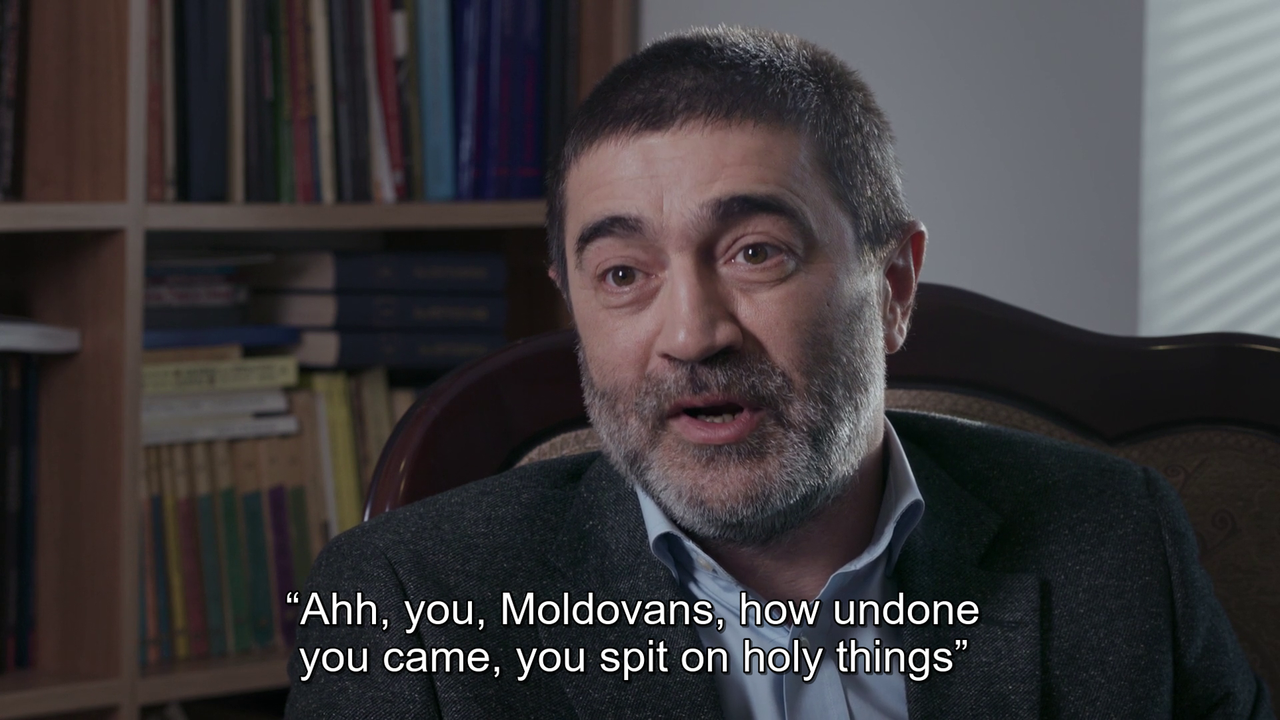
Moldova 89-91 (Eugen Damaschin, 2019) #CoMoMoldova
it's mostly a "talking heads" documentary and this is the more comprehensive list of the protagonists (either speaking or being spoken about)...The documentary Moldova 89-91 presents the thread of events through which the neighboring state gained its independence with the collapse of the USSR. Thus, the film features politicians such as former presidents Mircea Snegur and Vladimir Voronin and former Deputy Prime Minister Iurie Rosca, along with many other witnesses and participants in the events of the formation of the Republic of Moldova as an independent state. And, of course, each of them has its own version of history.
→ https://en.wikipedia.org/wiki/Dumitru_Matcovschi
→ https://en.wikipedia.org/wiki/Leonida_Lari
→ https://en.wikipedia.org/wiki/Vladimir_Voronin
→ https://en.wikipedia.org/wiki/Nadejda_Br%C3%A2nzan
→ https://en.wikipedia.org/wiki/Mircea_Snegur
→ https://en.wikipedia.org/wiki/Stepan_Topal
→ https://en.wikipedia.org/wiki/Mircea_Druc
→ https://en.wikipedia.org/wiki/Valeriu_Matei
→ https://en.wikipedia.org/wiki/Ion_Had%C3%A2rc%C4%83
→ https://en.wikipedia.org/wiki/Iurie_Ro%C8%99ca
villain who participated in a failed coup (this happy failure speeding up the semi-dissolution)...
→ https://en.wikipedia.org/wiki/Boris_Pugo
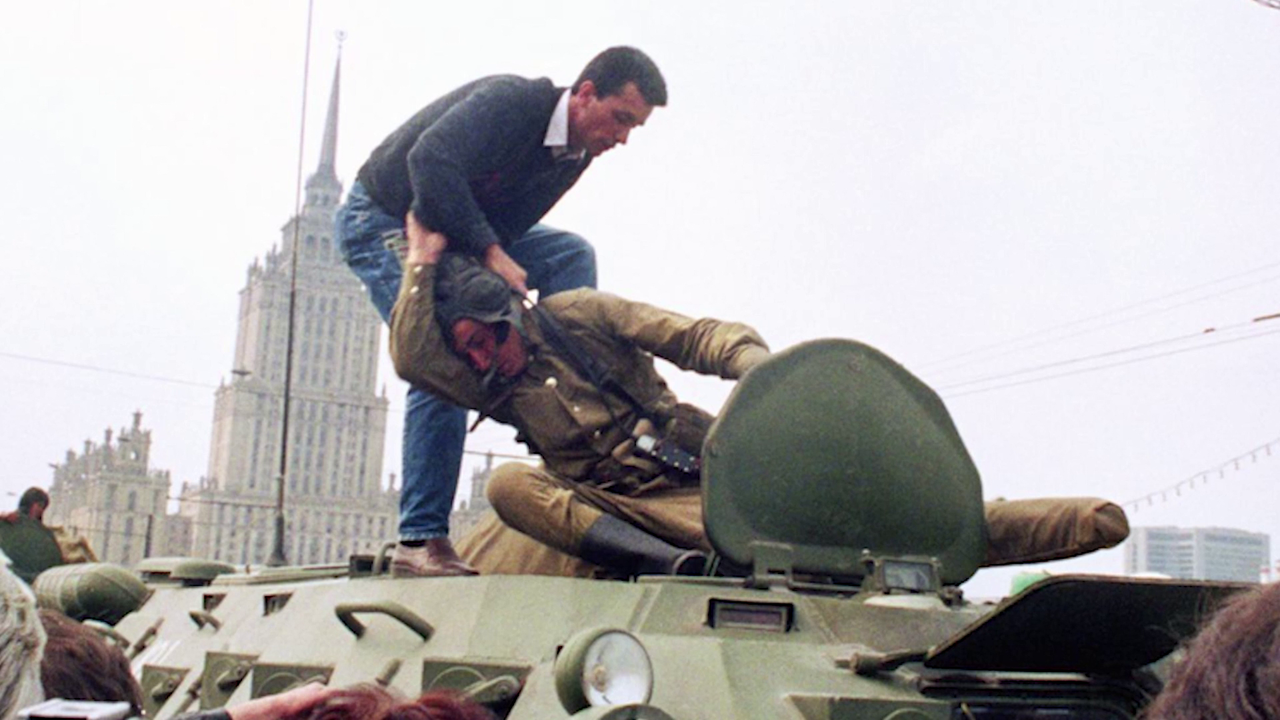
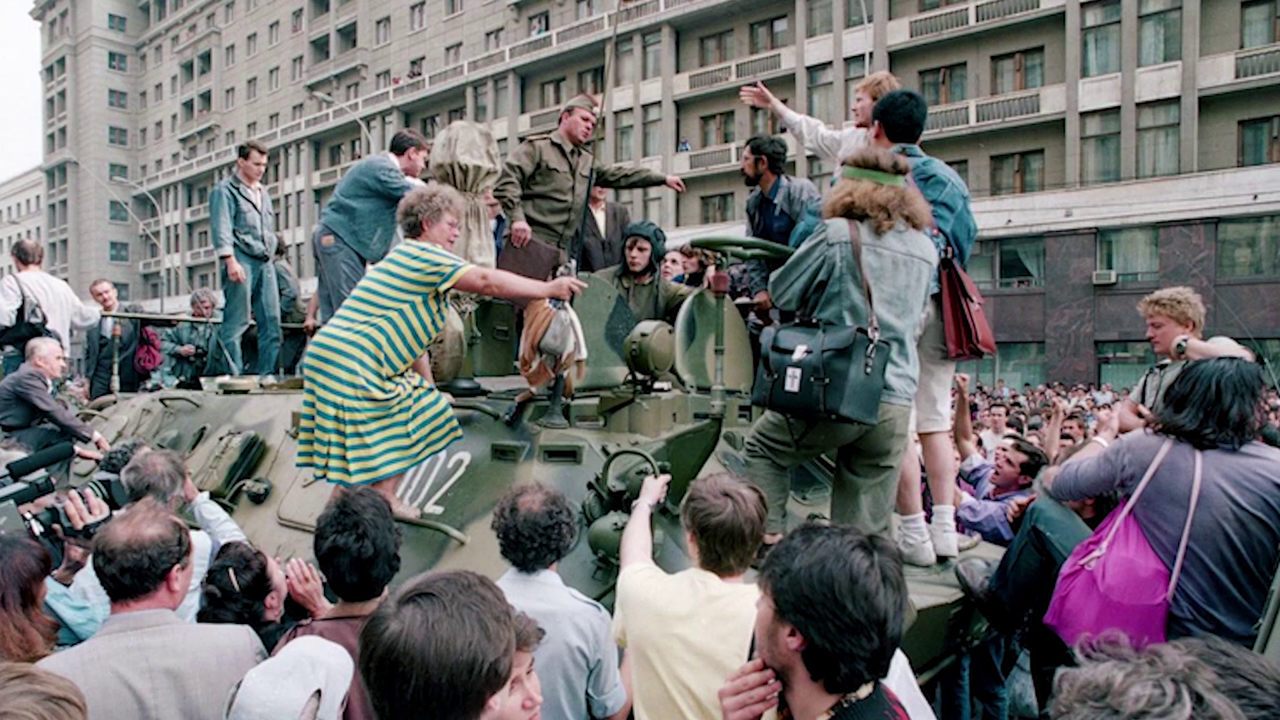
the ephemeral party that executed the transition...
→ https://en.wikipedia.org/wiki/Popular_Front_of_Moldova

historian...
→ https://en.wikipedia.org/wiki/Sergiu_Mustea%C8%9B%C4%83
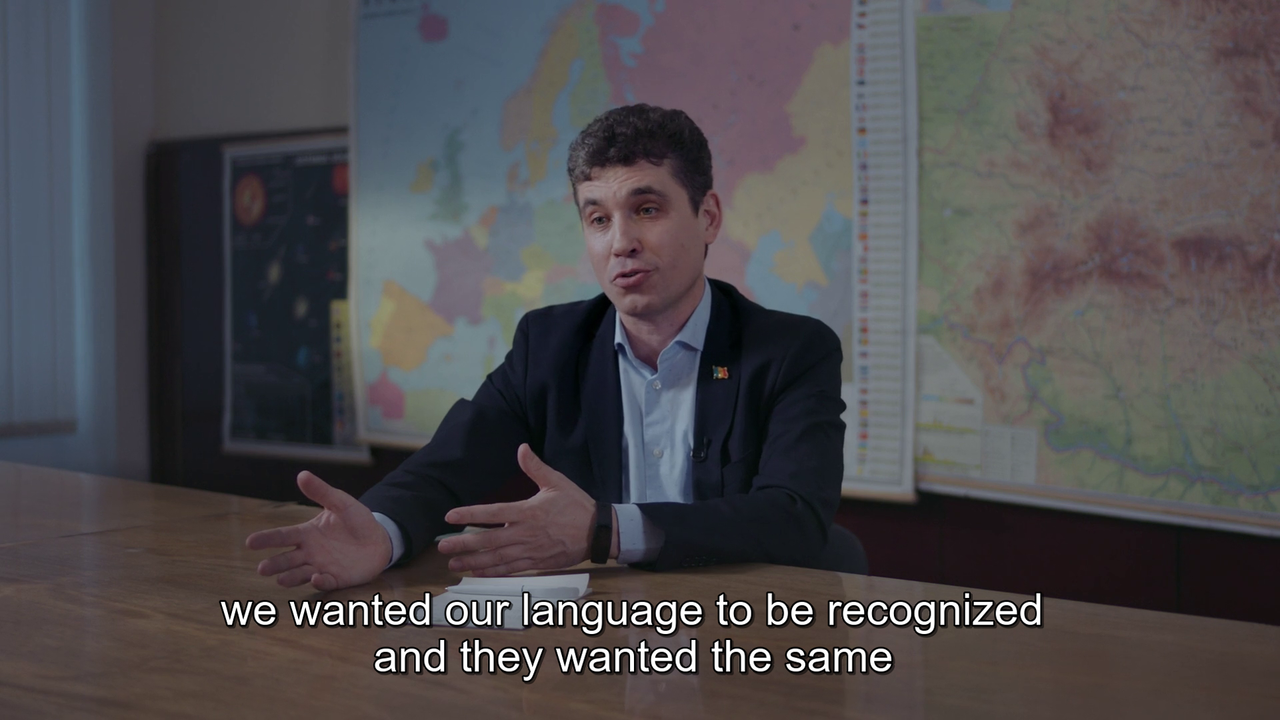
it's probably well-known trivia that this region's main language/political split is between Moldova (Romanian-speaking & Romania-leaning) and Transnistria (Russian-speaking & Russia-leaning).
but besides this main dichotomy, there is a (Turkic&Russian-speaking & Russia-leaning) autonomous territorial unit called Gagauzia.
→ https://en.wikipedia.org/wiki/Gagauzia


the additional (up-to-date) side now:
out of the myriad of links copy-pasted above, i would recommend (to those who identify themselves as left but are tired of the liberalism & identity politics) to take a closer look at this particular person...
→ https://en.wikipedia.org/wiki/Vladimir_Voronin
after the "alluring" intro...
i recommend scrolling down a bit and checking his "political views" and the alike...He was the third President of Moldova from 2001 until 2009 and has been the leader of the Party of Communists of Moldova (PCRM) since 1994. He was Europe's first democratically elected communist party head of state after the dissolution of the Eastern Bloc.
Though Voronin identifies himself as a left-wing politician, he is strongly conservative on social issues. He is against immigration and he rejects the building of mosques in Moldova, as well as LGBT rights. His remarks towards the African-born activist John Onoje: "They (the ruling parties) brought here a Negro, who'd just climbed down from a tree, and now he's doing politics for them."
in the post-Soviet realm, it's pretty common that the conservative comrades are no less fascist than the "true/right" fascists.Vlad Bilețchi, leader of the Alliance for the Unification of Romanians (Alianța pentru Unirea Românilor - AUR) party, demanded that Voronin's words that “with the arrival of NATO” ‘brown children’ will be born in Moldova” be recognized as xenophobic and racist.
also in my country, the members of the communist party were prevalently endorsing Trump.
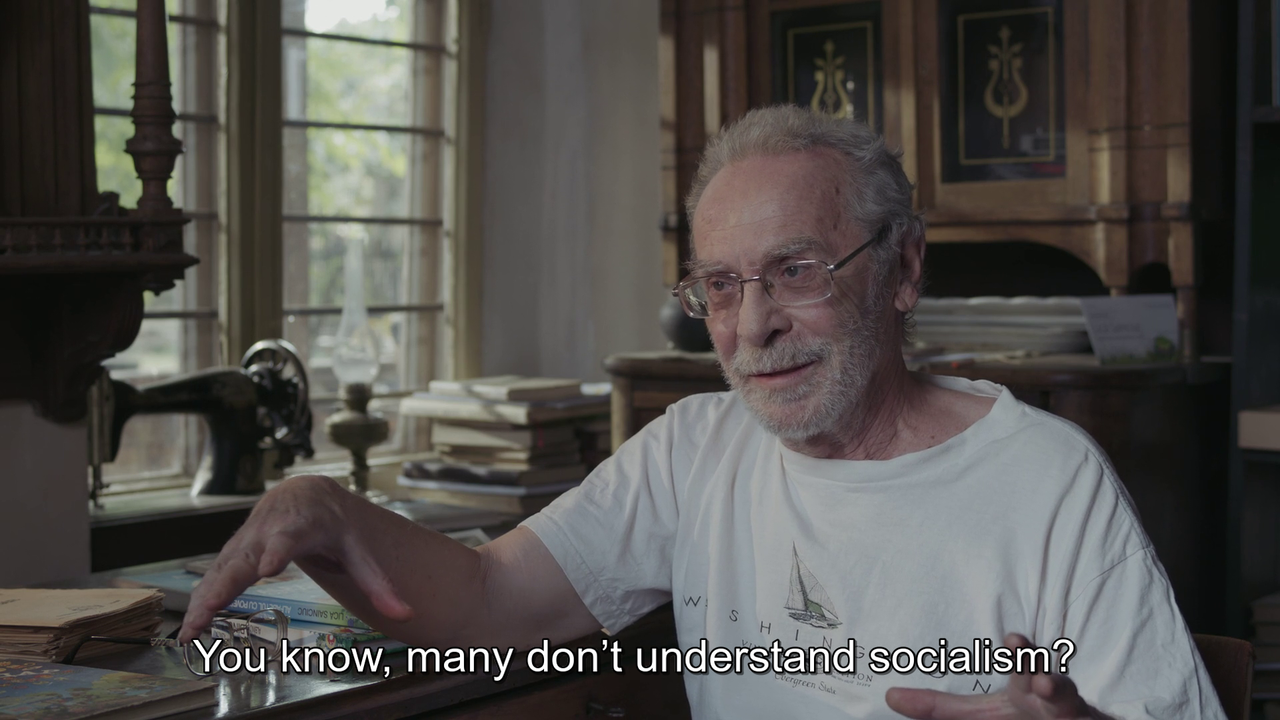
- Holdrüholoheuho
- Posts: 3200
- Joined: Sat Sep 05, 2020 12:30 am
- Location: Prague, Bohemia
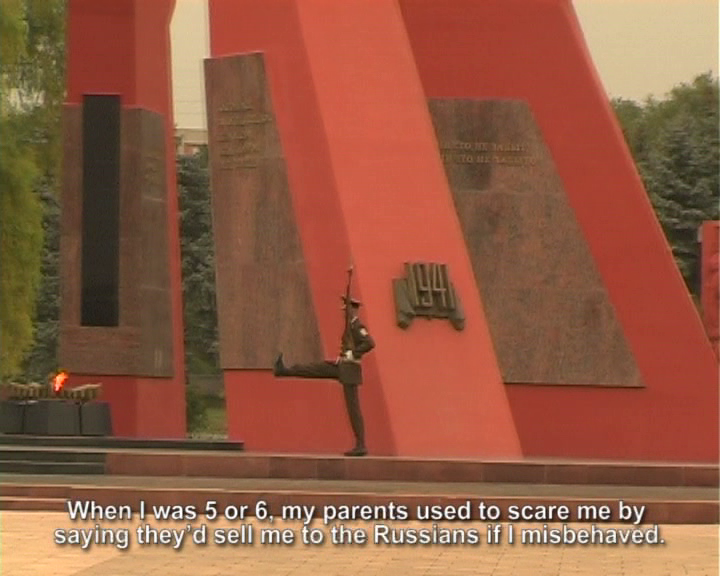
Letter from Moldova (Joanne Richardson, 2009) #CoMoMoldova
Joanne Richardson was born in Bucharest, Romania, and emigrated with her family to New York when she was nine years old.
In 2000 she quit her PhD studies and returned to Romania to co-found the media activist NGO “D-Media” in Cluj.
She lives and works in Berlin and Cluj.
pro-kremlin Transnistria is not included in the travelogue...Inspired by Chris Marker’s Letter from Siberia, this journey to Moldova is narrated through ten letters that reflect on the collapse of the Soviet Union, the contradictory nature of the current power of the communist party, and the uneasy proximity between post-colonialism and nationalism.
On another level, Letter from Moldova is a travelogue that brings to light the problematic nature of travel discourse and its affirmation of cultural superiority by portraying traveling to the East as a journey back in time.
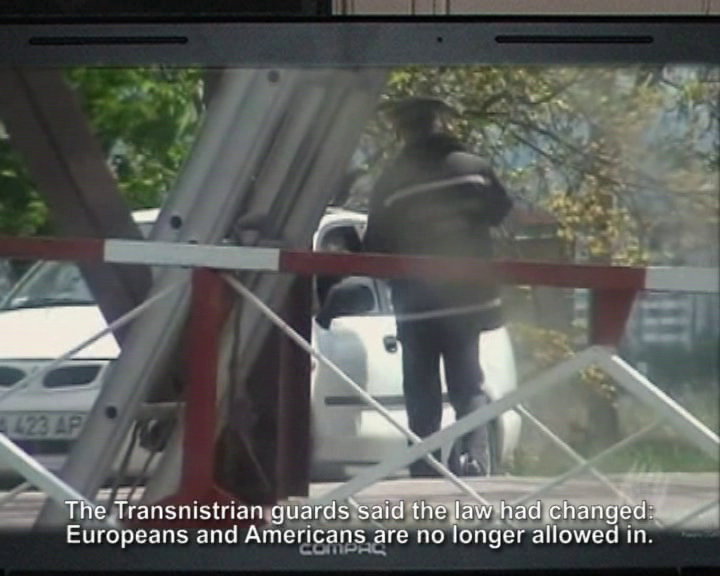
... comrade Sheriff allows no interference from outside of the family.
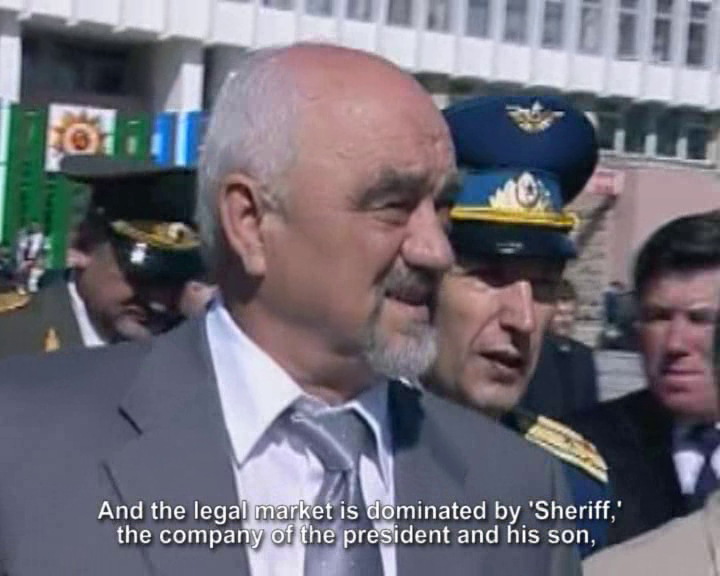
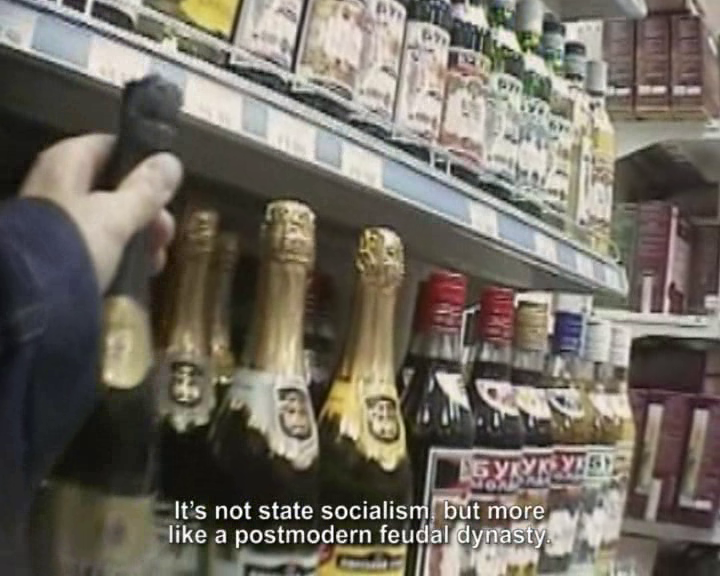
- Holdrüholoheuho
- Posts: 3200
- Joined: Sat Sep 05, 2020 12:30 am
- Location: Prague, Bohemia
Golgotha of Bessarabia (Ion Chistruga, Alina Ciutac, 2010) #CoMoMoldova
a film essay with a suggestive voiceover (& explicit imagery) that raises a valid critique of Soviet/Stalinist imperialism (& points out related atrocities),
while also slipping into the pathetic claro-fascist tirades,
or a delirious rambling about the non-arbitrary nature of language (thus contradicting the findings of Ferdinand de Saussure).
→ https://en.wikipedia.org/wiki/Soviet_oc ... n_Bukovina
→ https://en.wikipedia.org/wiki/Soviet_de ... n_Bukovina
→ https://en.wikipedia.org/wiki/Hertsa_region
→ https://en.wikipedia.org/wiki/Stephen_the_Great
→ https://en.wikipedia.org/wiki/Vasile_Lupu
or famine of 1946-47 (the third and final of the major Soviet famines),
→ https://en.wikipedia.org/wiki/Soviet_fa ... %80%931947
or outburst of the anti-Soviet resistance between 1969 and 1971,
→ https://en.wikipedia.org/wiki/National_ ... _(Moldova)
or many other things.
as obvious (from the usual myriad of links), watching this film was a very time-consuming event (i made plenty of detours).
the most adventurous getting astray was triggered by the following frame with comrade Stalin...
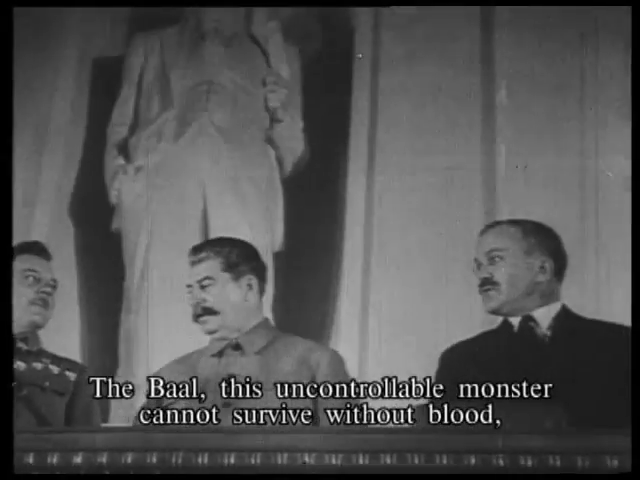
... because it made me investigate the identity of the Baal entity
→ https://en.wikipedia.org/wiki/Bael_(demon)
btw. you can find the "Baal/Baël" entry on the page 71
→ https://archive.org/details/dictionnair ... 0/mode/2up
a film essay with a suggestive voiceover (& explicit imagery) that raises a valid critique of Soviet/Stalinist imperialism (& points out related atrocities),
while also slipping into the pathetic claro-fascist tirades,
or a delirious rambling about the non-arbitrary nature of language (thus contradicting the findings of Ferdinand de Saussure).
film's main topic is the bitter history of the contested area of Bessarabia, the Northern Bukovina, & the Hertsa region
→ https://en.wikipedia.org/wiki/Soviet_oc ... n_Bukovina
→ https://en.wikipedia.org/wiki/Soviet_de ... n_Bukovina
→ https://en.wikipedia.org/wiki/Hertsa_region
On 23 August 1939, the Soviet Union and Nazi Germany signed the Molotov–Ribbentrop Pact,
a non-aggression treaty that contained an additional secret protocol with maps in which a demarcation line through Eastern Europe was drawn and divided it into the German and Soviet interest zones. Bessarabia was among the regions assigned to the Soviet sphere of interest by the Pact. Article III of its Secret Additional Protocol stated:
With regard to Southeastern Europe attention is called by the Soviet side to its interest in Bessarabia. The German side declares its complete political disinterestedness in these areas.
Assured by the Molotov–Ribbentrop Pact of Soviet non-interference, Germany started World War II one week later by invading Poland from the west on 1 September 1939. The Soviet Union attacked Poland from the east on 17 September, and by 6 October, Poland had fallen. Romanian Prime Minister Armand Călinescu, a strong supporter of Poland in its conflict with Germany, was assassinated on 21 September by elements of the far-right Iron Guard with Nazi support.
On 2 June 1940, Germany informed the Romanian government that to receive territorial guarantees, Romania should consider negotiations with the Soviet Union.
On 22 June, France, a guarantor of Romanian borders, fell to Nazi advances. This is considered to be an important factor in the Soviets' decision to issue the ultimatum.
On 26 June 1940, at 22:00, Soviet People's Commissar Vyacheslav Molotov presented an ultimatum note to Gheorghe Davidescu, the Romanian plenipotentiary minister to Moscow, in which the Soviet Union demanded the evacuation of the Romanian military and civil administration from Bessarabia and the northern part of Bukovina.
On 27 June, Molotov declared that if the Romanians rejected Soviet demands, the Soviet troops would cross the border. Molotov gave the Romanian government 24 hours to respond to the ultimatum.
film's minor topics are historical greats, namely Stephen the Great (1433/1440-1504) or Vasile Lupu (1595-1661),On the morning of 28 June 1940, following advice by both Germany and Italy, the Romanian government, led by Gheorghe Tătărescu, under the semi-authoritarian rule of Carol II, agreed to submit to the Soviet demands. Soviet forces also occupied the Hertsa region, part of the Romanian Old Kingdom, which was in neither Bessarabia nor Bukovina.
→ https://en.wikipedia.org/wiki/Stephen_the_Great
→ https://en.wikipedia.org/wiki/Vasile_Lupu
or famine of 1946-47 (the third and final of the major Soviet famines),
→ https://en.wikipedia.org/wiki/Soviet_fa ... %80%931947
or outburst of the anti-Soviet resistance between 1969 and 1971,
→ https://en.wikipedia.org/wiki/National_ ... _(Moldova)
or many other things.
as obvious (from the usual myriad of links), watching this film was a very time-consuming event (i made plenty of detours).
the most adventurous getting astray was triggered by the following frame with comrade Stalin...

... because it made me investigate the identity of the Baal entity
→ https://en.wikipedia.org/wiki/Bael_(demon)
so, basically, i started watching Golgotha of Bessarabia and ended up peeking into Dictionnaire Infernal,He is described as a hoarsely-voiced king with the power to make men invisible and ruling over sixty-six legions of demons. The Lesser Key of Solomon describes him as appearing in the form of a cat, toad, human, some combination thereof, or other "diverse shapes", while the Pseudomonarchia Daemonum and the Dictionnaire Infernal state that he appears with the heads of a cat, toad, and human simultaneously.
btw. you can find the "Baal/Baël" entry on the page 71
→ https://archive.org/details/dictionnair ... 0/mode/2up
- Holdrüholoheuho
- Posts: 3200
- Joined: Sat Sep 05, 2020 12:30 am
- Location: Prague, Bohemia
so, let's put this southern part of Bessarabia (i.e. Gagauzia) into spotlights...Holdrüholoheuho wrote: ↑Wed Nov 06, 2024 3:13 pm it's probably well-known trivia that this region's main language/political split is between Moldova (Romanian-speaking & Romania-leaning) and Transnistria (Russian-speaking & Russia-leaning).
but besides this main dichotomy, there is a (Turkic&Russian-speaking & Russia-leaning) autonomous territorial unit called Gagauzia.
→ https://en.wikipedia.org/wiki/Gagauzia
Welcome to Gagauzia (Vasili Vikhliaev, 2014) #CoMoMoldova
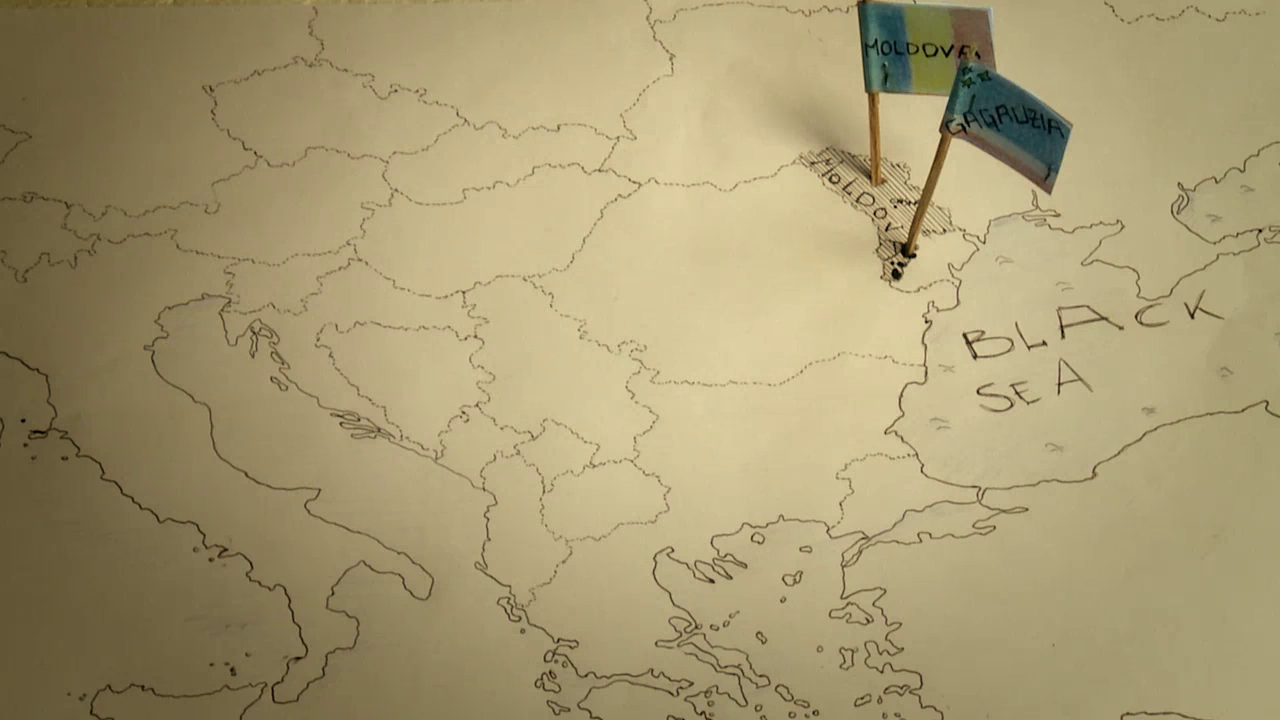
Gagauzia is a region of the most unknown country in Europe, Moldova. A place, most people are eager to leave. Some stay though. Vasili was left behind. His wife went to work in Turkey 6 years ago. Their son Sergei hasn't heard from her ever since. Anna cannot leave behind her past, cannot leave behind her roots. And Manjul never wanted to leave in the first place. He finds freedom in this restricted place.
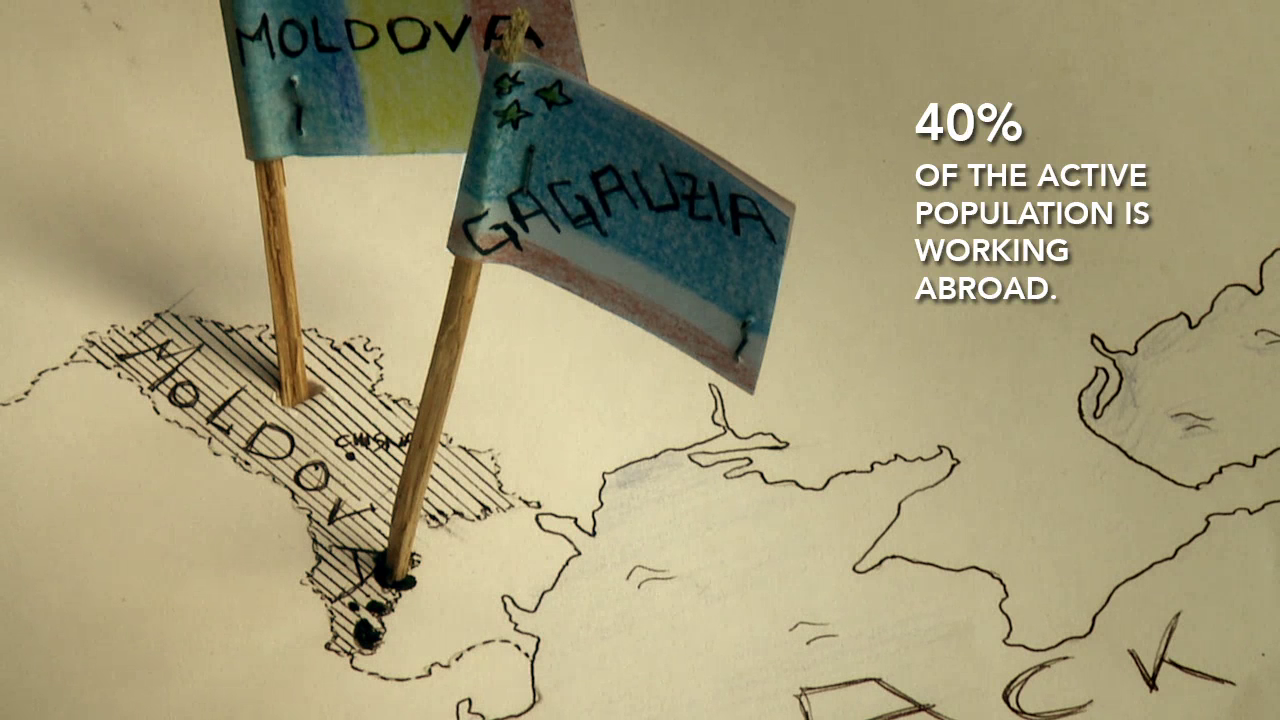
as with any other region that's on the periphery or part of a contested area, the crucial existential question of the inhabitants is: "to stay OR to leave?"
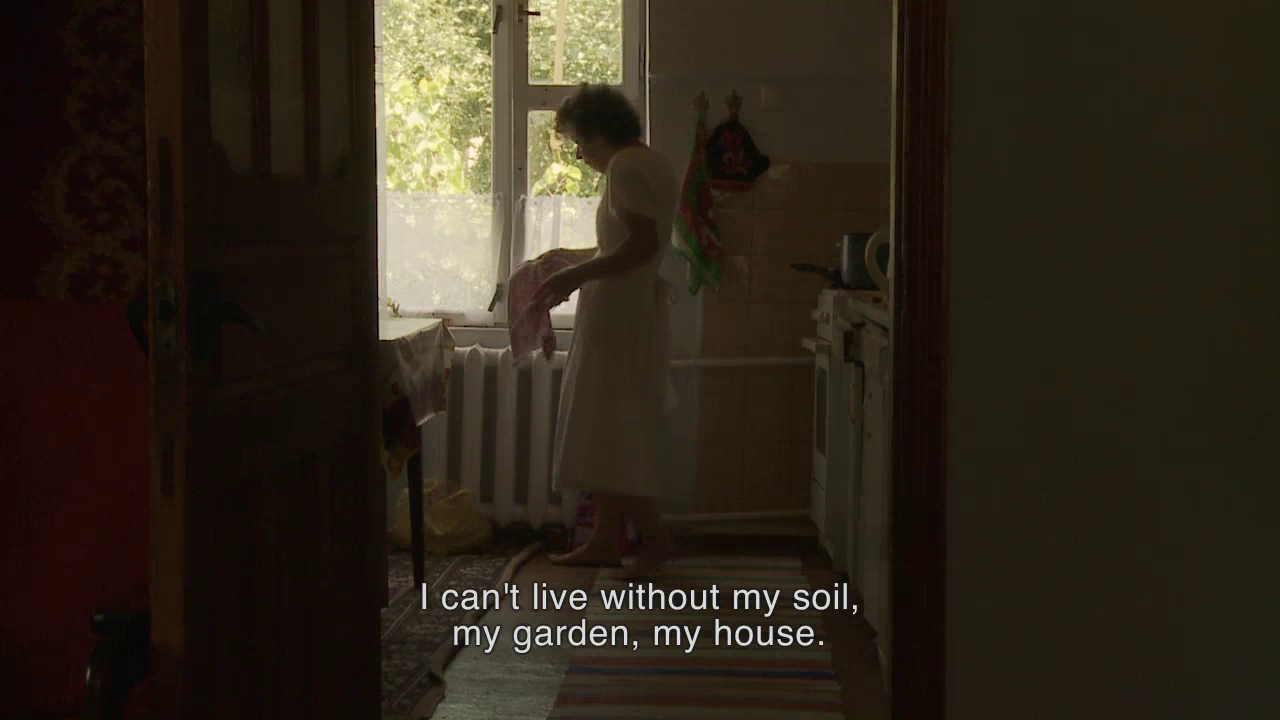
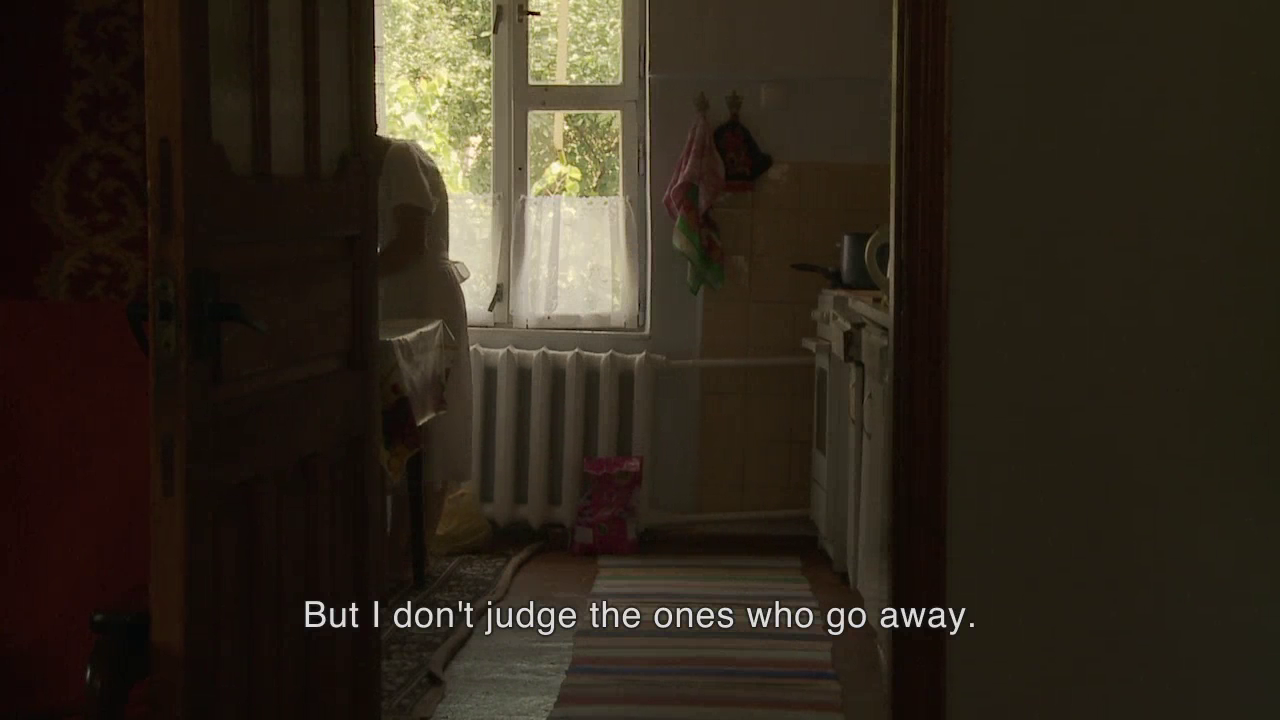
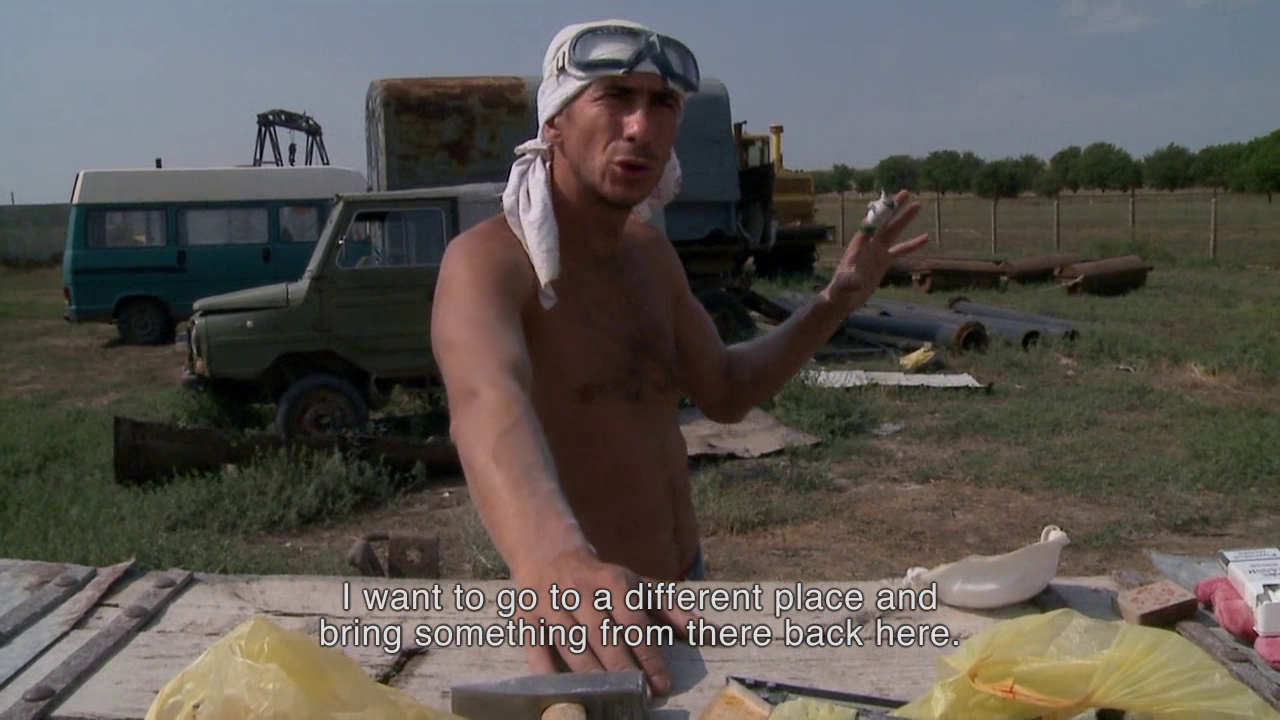
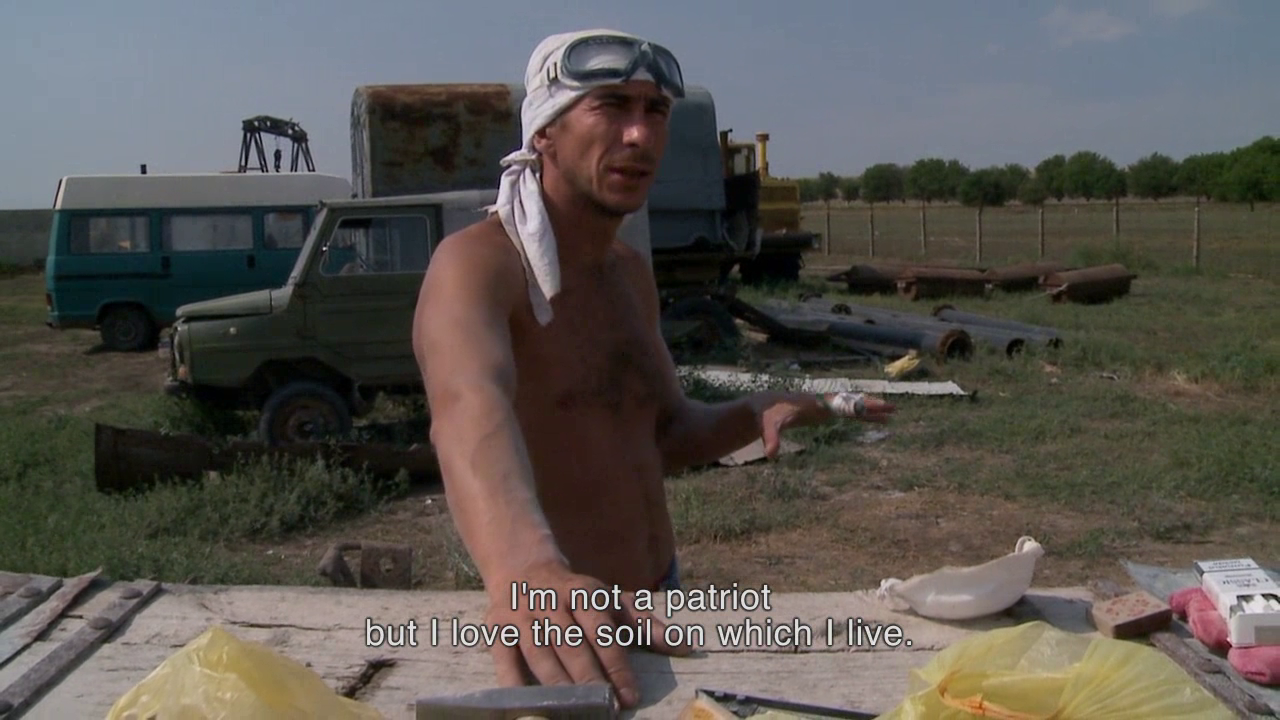
Gaugaz people are not the only ethnic group forced to build its pathetic self-esteem (patriotism?) on an initial ethnic slur
→ https://en.wikipedia.org/wiki/Gagauz_people
no wonder filming in such a place might not be a simple task!According to Astrid Menz ("The Gagauz between Christianity and Turkishness", 2007):
Older ethnographic works such as Pees (1894) and Jireček (1891)—both covering the Gagauz in Bulgaria—mention that only their neighbors used the ethnonym Gagauz, partly as an insult. The Gagauz themselves did not use this self-designation; indeed, they considered it offensive. Both Pees and Jireček mention that the Gagauz in Bulgaria tended to register either as Greek because of their religion (clearly an outcome of the Ottoman millet-system) or as Bulgarian because of the newly emerging concept of nationalism. According to Pees informants from Moldova, the Gagauz there called themselves Hristiyan-Bulgar (Christian Bulgar), and Gagauz was used only as a nickname (Pees 1894, p. 90). The etymology of the ethnonym Gagauz is as unclear as their history. As noted above, they are not mentioned—at least not under that name—in any historical sources before their immigration into Bessarabia. Therefore, we have no older versions of this ethnonym. This, combined with the report that the Gagauz felt offended when called by this name, makes the etymology somewhat dubious.
once, it happens (during this film) that (instead of a full-fledged audio-visual work) a viewer is presented with the blank frames raising a pissed-off voice
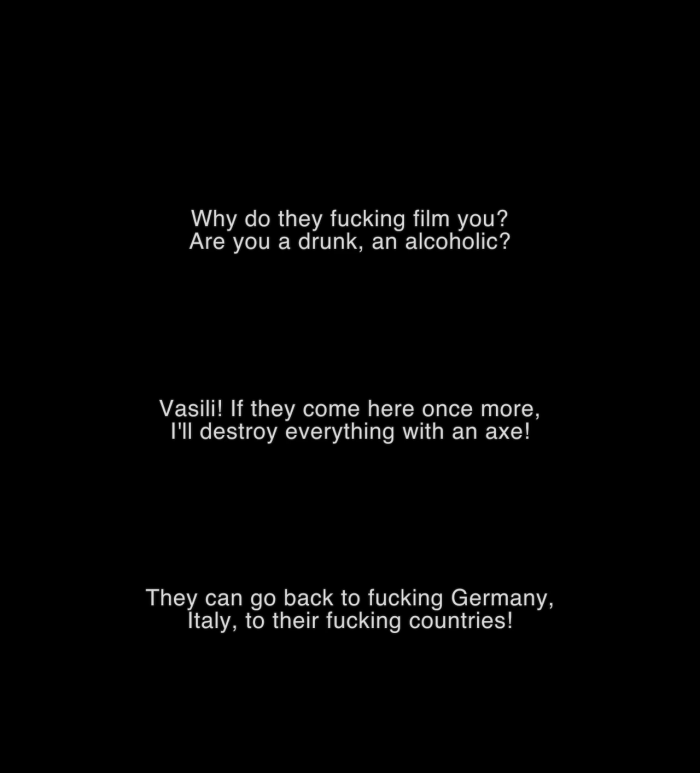
some of you might remember this ↓↓ post (i made in the other thread)??!?
→ https://scfzforum.org/phpBB3/viewtopic. ... 956#p47956
so, this time i experienced something (uncanny) similar (again, i was mirrored in the film by a random elderly lady).Holdrüholoheuho wrote: ↑Sat Nov 02, 2024 11:44 am i usually watch the films in the same pose this lady assumed while listening to a young libertine telling his tales of seduction

while the previous depicts rather my prevalent mode of watching/listening in the urban/affluent environment/context of Prague, whenever i move to my ancestral manor in the countryside i tend to "see & hear" like this ↓↓
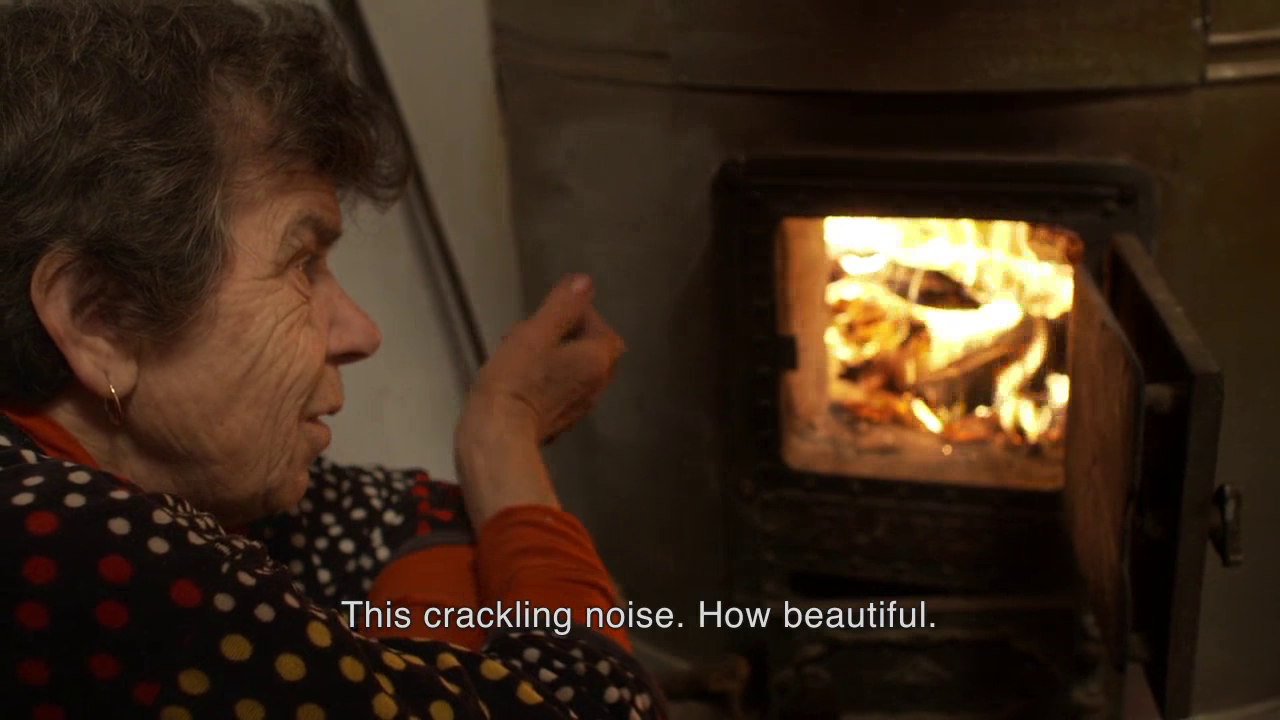
This crackling noise. How beautiful!
Such great warmth from this fire.
Once we spent the night in the taiga.
It was about minus 30 degrees.
We made a big fire.
A very very big fire!
We spread the ashes of the fire and put our sleeping bags on that spot.
Like this, we spent the night in the taiga.
That was romantic.
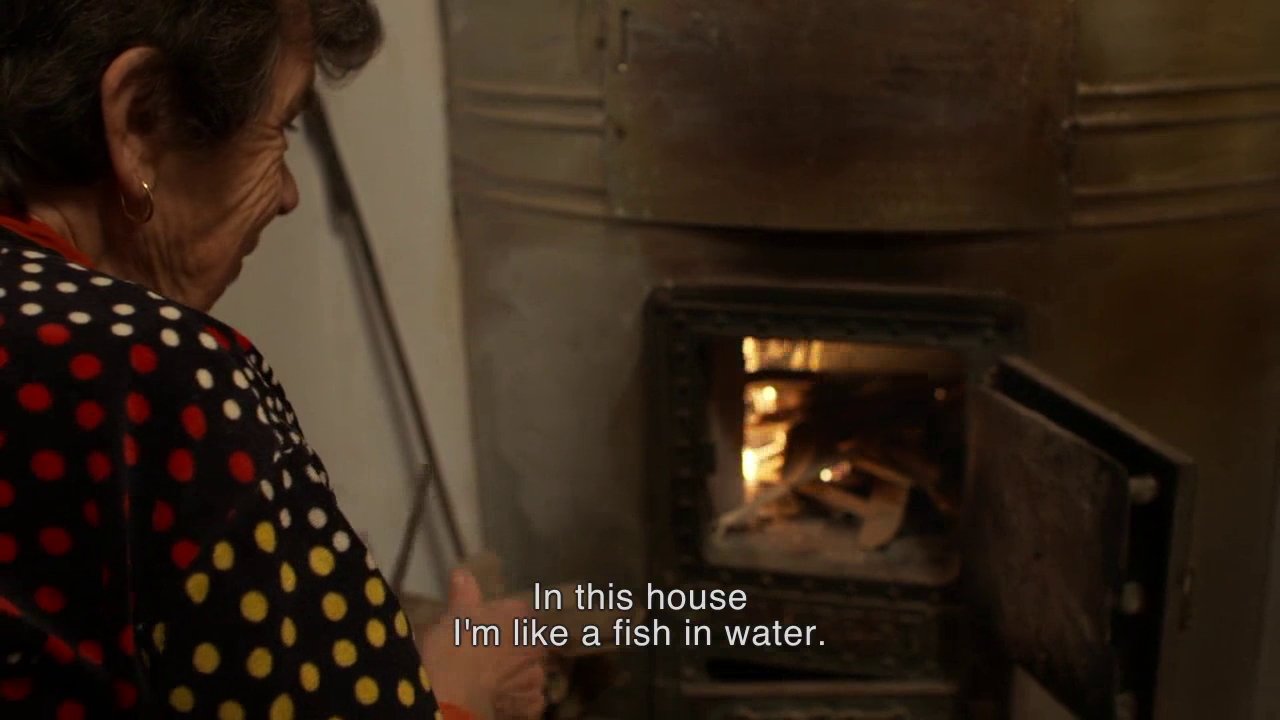
also, i can give a hint to a possible filming location hunter who might be secretly following this forum as an anonymous lurker that, in my opinion, Gagauzia is an ideal spot to film an adaptation of Don Quijote without any expenditures for a congenial set design.
all you need is already there!
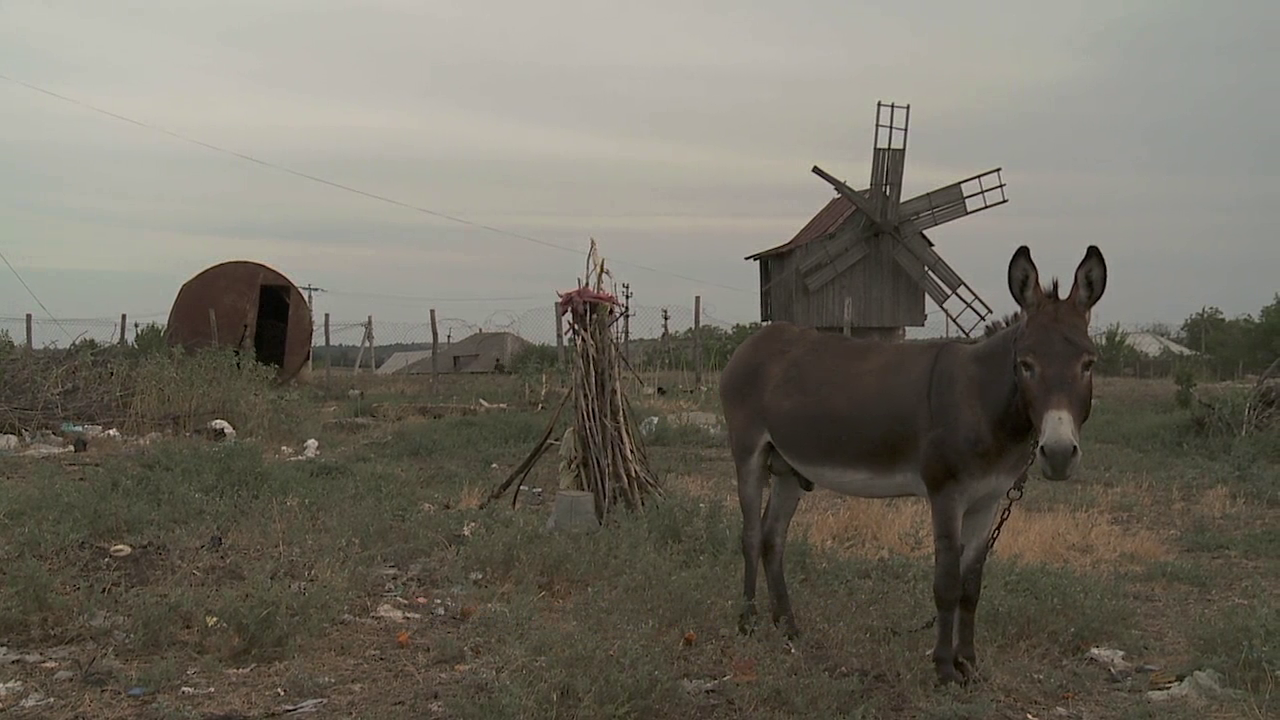
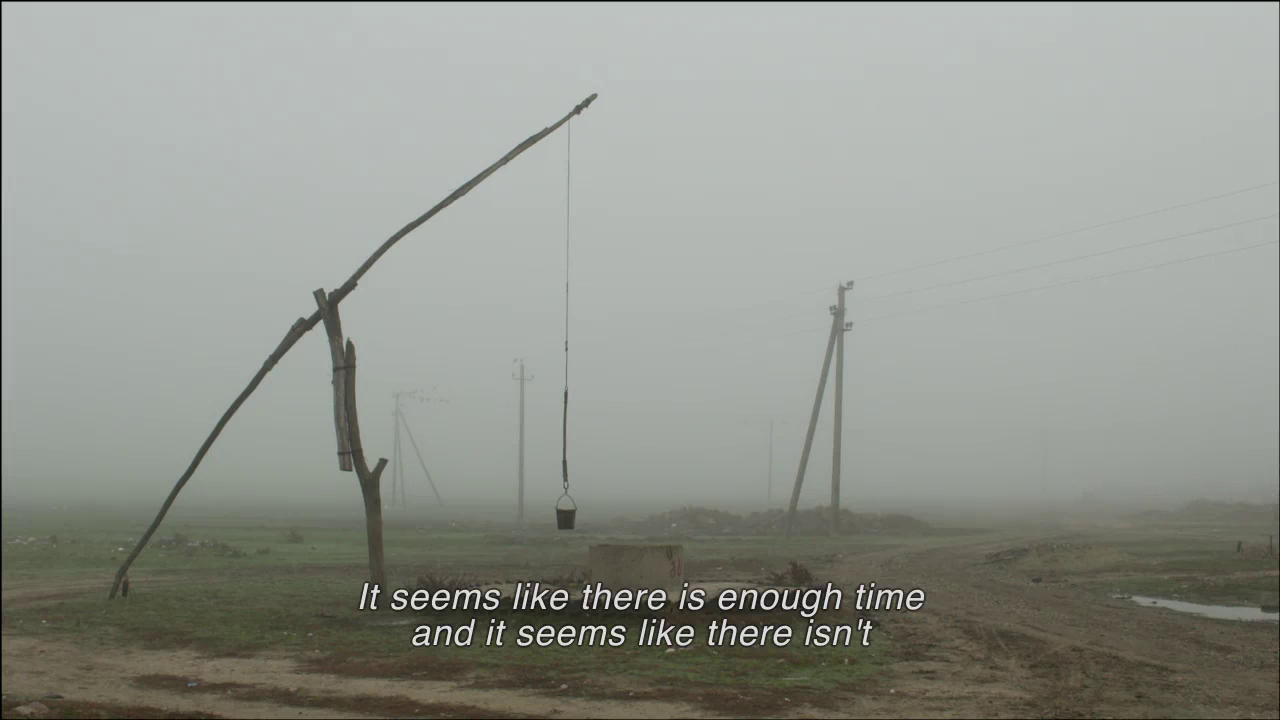
if anyone assumes i will say at this moment in Russian: "It's the last dance of CoMoMoldova! Go home now!"...

... NO WAY! it's only the last dance of the documentary genre!
subsequently, i am going to shift my attention to cinema proper (or cinema as a dramatic art) and shout in Gagauz: "Priceless years are still ahead of us."
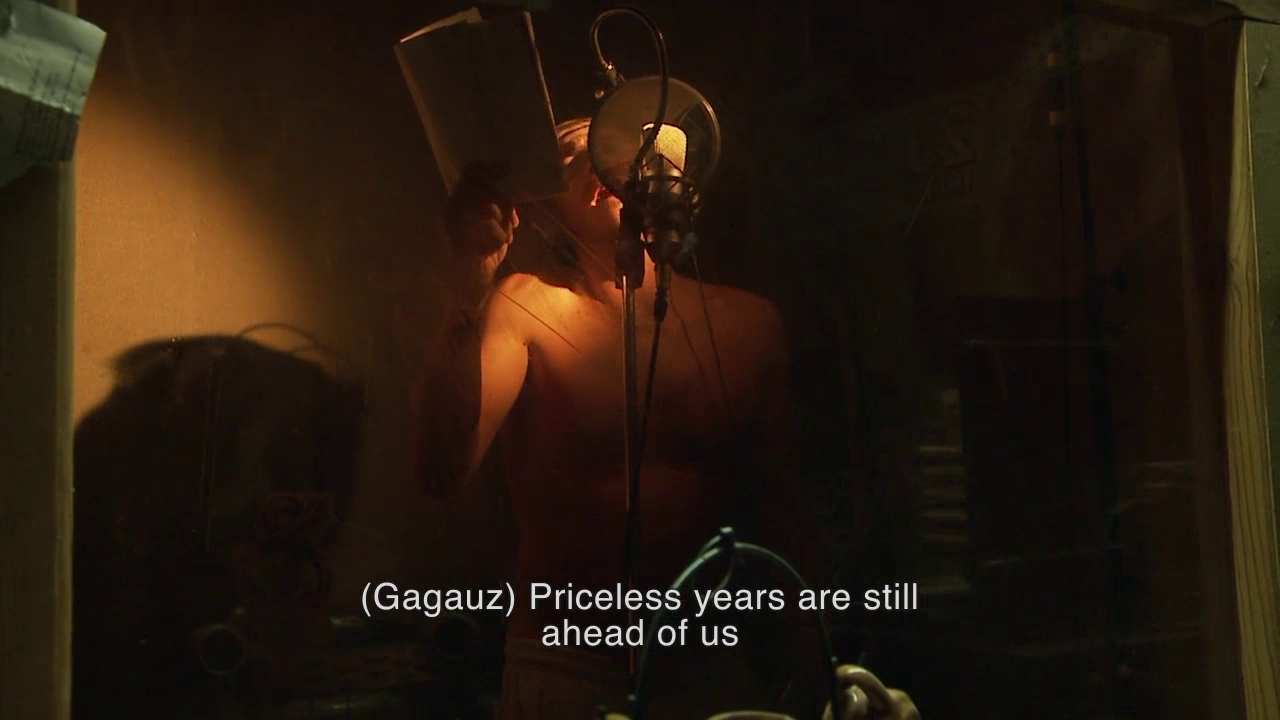
this is wonderful jiri ~
- Holdrüholoheuho
- Posts: 3200
- Joined: Sat Sep 05, 2020 12:30 am
- Location: Prague, Bohemia
ooooo, thank you, rischka!
Lăutarii (Loteanu)
Heavenly Gypsies (Loteanu)
To Love... (Kalik) (wife translated this and I did the timings)
Sandu Follows the Sun (Kalik)
That's what I got! Not too many subbed Moldovan movies out there.
Heavenly Gypsies (Loteanu)
To Love... (Kalik) (wife translated this and I did the timings)
Sandu Follows the Sun (Kalik)
That's what I got! Not too many subbed Moldovan movies out there.
Have a look at all the picnics of the intellect: These conceptions! These discoveries! Perspectives! Subtleties! Publications! Congresses! Discussions! Institutes! Universities! Yet: one senses nothing but stupidity. - Gombrowicz, Diary
-
Mario Gaborovic
- Posts: 252
- Joined: Fri Jan 04, 2019 8:54 am

from i do not care if we go down in history as barbarians (radu jude 2018)


I know. I should watch it already.Mario Gaborovic wrote: ↑Tue Nov 12, 2024 2:50 pm https://www.imdb.com/title/tt0172681/
Red Meadows is translated, too.
Have a look at all the picnics of the intellect: These conceptions! These discoveries! Perspectives! Subtleties! Publications! Congresses! Discussions! Institutes! Universities! Yet: one senses nothing but stupidity. - Gombrowicz, Diary
- Holdrüholoheuho
- Posts: 3200
- Joined: Sat Sep 05, 2020 12:30 am
- Location: Prague, Bohemia
3 short cinematic anecdotes (with English subs)...
the last one obviously dedicated to the aforementioned (viz one of the previous posts) Vladimir Voronin
When the Lights Go Out (Igor Cobileanski, 2006) #CoMoMoldova
the last one obviously dedicated to the aforementioned (viz one of the previous posts) Vladimir Voronin
When the Lights Go Out (Igor Cobileanski, 2006) #CoMoMoldova
Sasa, Grisa and Ion (Igor Cobileanski, 2006) #CoMoMoldovaIn a poor country obsessed with making easy money, 100 bucks are enough to lose your mind for a couple of minutes.
The members of a rock band come up with a bet.
Inspiration (Igor Cobileanski, 2007) #CoMoMoldovaThree troubleshooters are sent into a remote field to fix a broken cable.
The cold, too much ardour and a little bit of vodka will make their work useless.
A bored mayor, his assistant, and a community cop set out looking for inspiration.There’s no man in our state
With such wisdom, full of vim,
Our mayor’s brought by fate,
We will only vote for him!
He brought gas to our homes,
Good and kind like Harry Potter
Wise and smart like Sherlock Holmes
He gave us soap and water!
You, the Mayor’s evil foes,
Can’t you see, or are you blind?
Decency is on the grow,
Glory comes to humankind!
Child and elder, everyone,
Know that now, in our village,
Life is not tough, it's fun!
And there’s no more place for pillage!
- Holdrüholoheuho
- Posts: 3200
- Joined: Sat Sep 05, 2020 12:30 am
- Location: Prague, Bohemia
The Shooting Party AKA My Tender and Affectionate Beast (Emil Loteanu, 1978) #CoMoMoldova
https://www.imdb.com/review/rw4336579/? ... urv_perm_4
THE SHOOTING PARTY, aka. A HUNTING ACCIDENT is Soviet filmmaker Emil Loteanu's cinematic interpretation of Chekhov's only full-length, eponymous novel, and the final product is as sumptuously alluring as it is melancholically tedious.
The plot centers around a 19-year-old bombshell Olga (Belyaeva), the daughter of a forester, playing the field between three older men who are besotted with her, Count Karneyev (Lavrov), noble widower Urbenin (Markov) and our protagonist the court investigator Kamyshev (Yankovsky), only the latter she truly loves, but oscillating between financial security and veridical feelings, she makes many a decision against her best judgement, until a hunting accident brings down the curtain on her transient life, but the guilty party gets off scot-free, much obliged to her own withdrawal of the information in extremis.
By meting out punishment to Olga as the token sinner and her husband a scapegoat taking the rap, Chekhov's novel ineluctably hews to that time-honored phallocratic presumption that it is any above-board man's poetic justice to penalize a wanton nymphet, and what rubs salt into the wound is that Loteanu's film is saturated with wandering male gaze and old-money decadence, a combo looks execrably unfashionable to today's ethos (or, on a less militant note, merely to this reviewer's lights).
The fact that a 16-year-old Galina Belyaeva (who would be endowed with the lofty epithet "Russian Audrey Hepburn") would soon be led to the altar by Loteanu, 25 years her senior, echos the director's own possessive infatuation with nubile youth, and their matrimony lasts only 5 years, which says much about the treacherous nature such union implicates.
For all its lyrical longueur, loosey-goosey character arc and an unsavory surplus of machismo that mingled with aristocratic dissipation, THE SHOOTING PARTY has its own merits, both for its production value and aural abundance, not least Eugene Doga's consecrated wedding waltz, and the cacophony invoked by a cohort of Gypsy musicians is so discordant that it is tenaciously embedded in the mind.

An assessment published by New York University's Literature Arts & Medicine Database notes:"The Shooting Party is neither a great novel nor a great mystery story. However, its merits go far beyond the usual attribution of juvenilia by a great writer. First, the story itself is ingenious. In its innovative structure, the book prefigures Agatha Christie's most famous novel, The Murder of Roger Ackroyd written 45 years later. Christie's novel caused a sensation with its narrator-as-murderer plot device."
- Holdrüholoheuho
- Posts: 3200
- Joined: Sat Sep 05, 2020 12:30 am
- Location: Prague, Bohemia
thanks, Karl, for mentioning Kalik in this thread and for making the subs!
To Love... (Mikhail Kalik, Inna Tumanyan, 1968) #CoMoMoldova
this film is a lucky mixture of dramatic art (acted short stories) and documentary (street interviews) and thus even if the topic of "love" inevitably generates plenty of banal claims & situations...
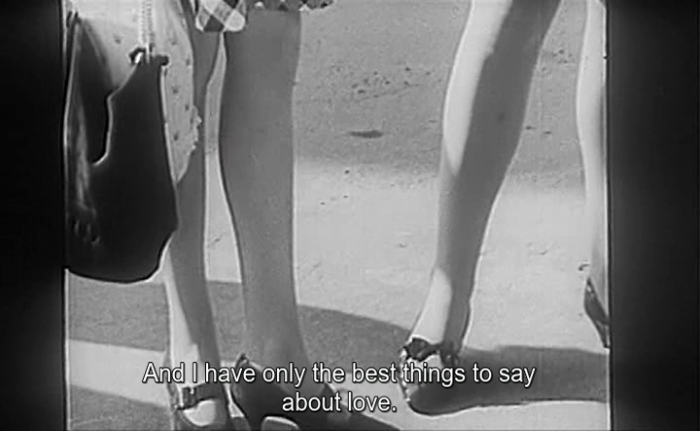
... the film itself is far from being banal and can be cherished even by a staunch skeptic with an ambivalent attitude to “values”
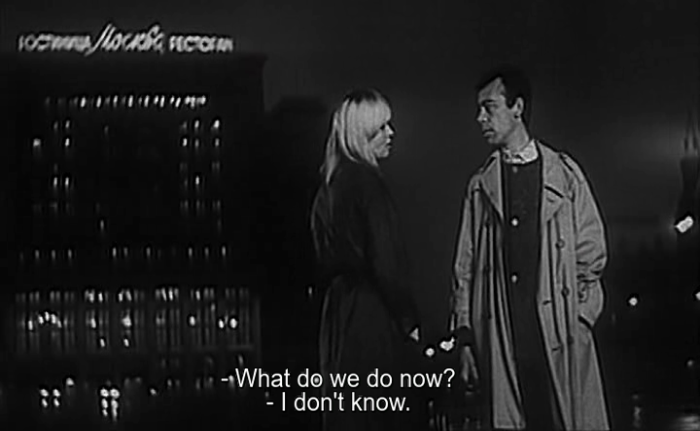
while those coming from Mars try to grasp the elusive topic of love by searching for numerical patterns (1-2-3-4)...
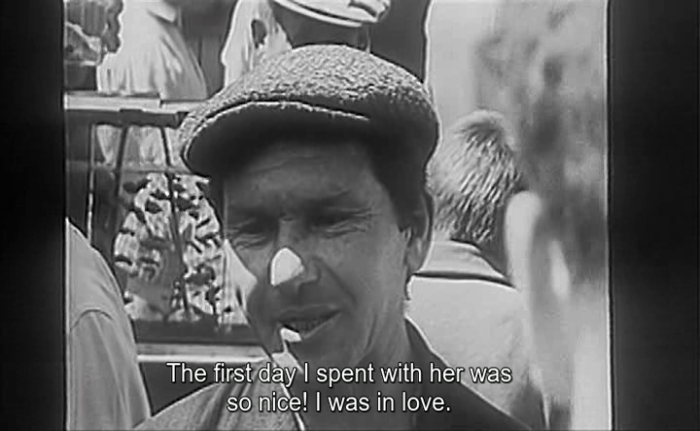


... those coming from Venus approach the same topic more instinctively (in almost a feline manner)
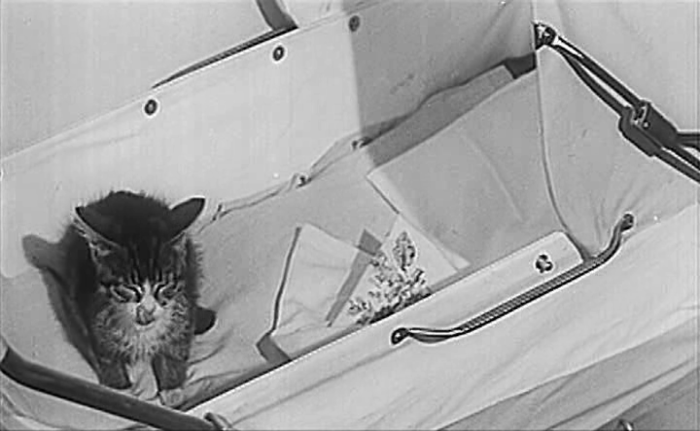
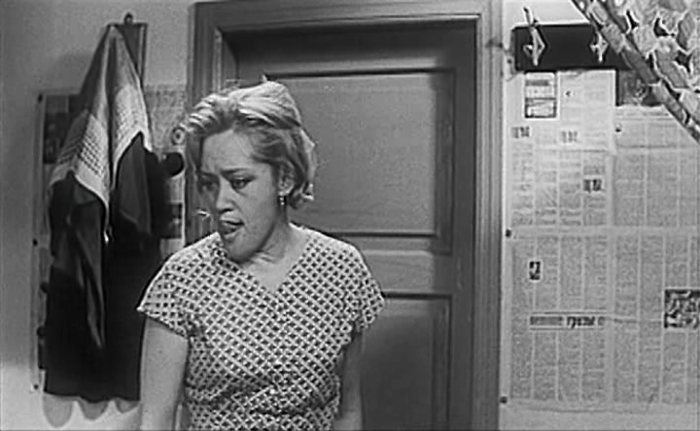

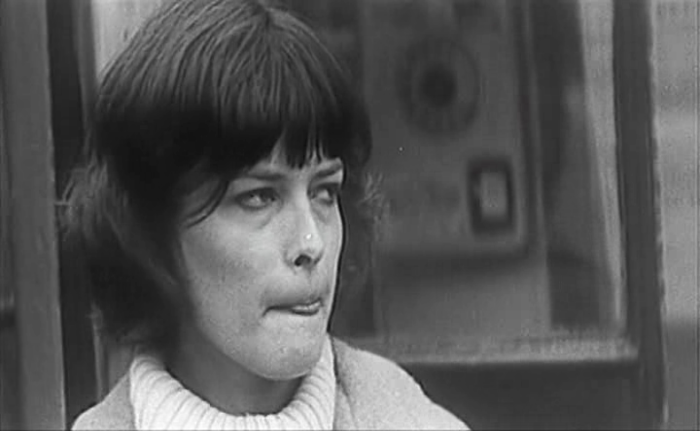
while some exhibit the vast experience of erogenous zones of the human body...
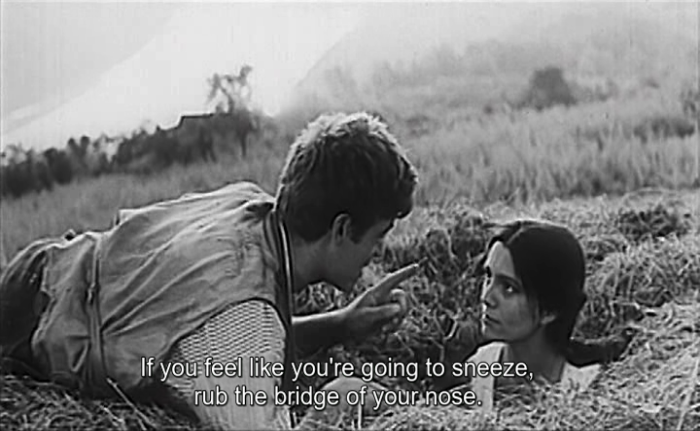
... others (who unfortunately joined the loveless Red Army) admit their emotional deprivation (thus risking that, after being sent on another senseless imperialist conquest somewhere abroad, this very deprivation will make them commit horrible crimes). MAKE LOVE, NOT WAR!
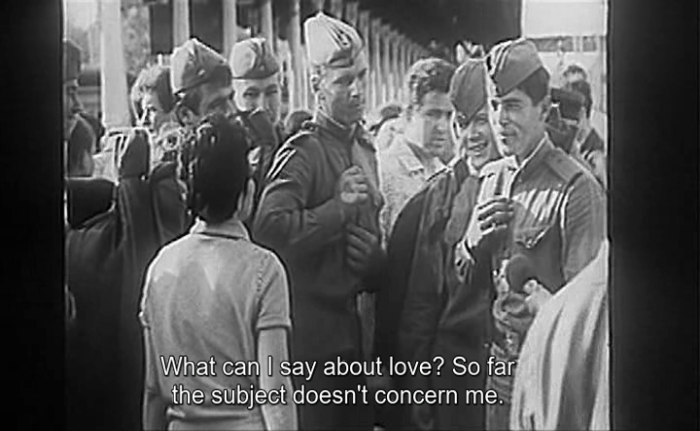
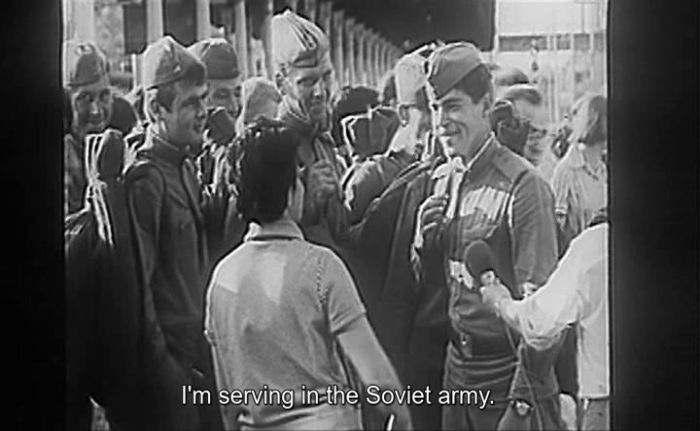
despite the film was originally released in 1968, there is also a 1992 director's cut in circulation (which was the version i watched)
To Love... (Mikhail Kalik, Inna Tumanyan, 1968) #CoMoMoldova
this film is a lucky mixture of dramatic art (acted short stories) and documentary (street interviews) and thus even if the topic of "love" inevitably generates plenty of banal claims & situations...

... the film itself is far from being banal and can be cherished even by a staunch skeptic with an ambivalent attitude to “values”

while those coming from Mars try to grasp the elusive topic of love by searching for numerical patterns (1-2-3-4)...



... those coming from Venus approach the same topic more instinctively (in almost a feline manner)




while some exhibit the vast experience of erogenous zones of the human body...

... others (who unfortunately joined the loveless Red Army) admit their emotional deprivation (thus risking that, after being sent on another senseless imperialist conquest somewhere abroad, this very deprivation will make them commit horrible crimes). MAKE LOVE, NOT WAR!


despite the film was originally released in 1968, there is also a 1992 director's cut in circulation (which was the version i watched)
The film ran into censorship difficulties because of its bleak view of love in the Soviet Union, and the director was only able to complete his preferred version in 1992.













